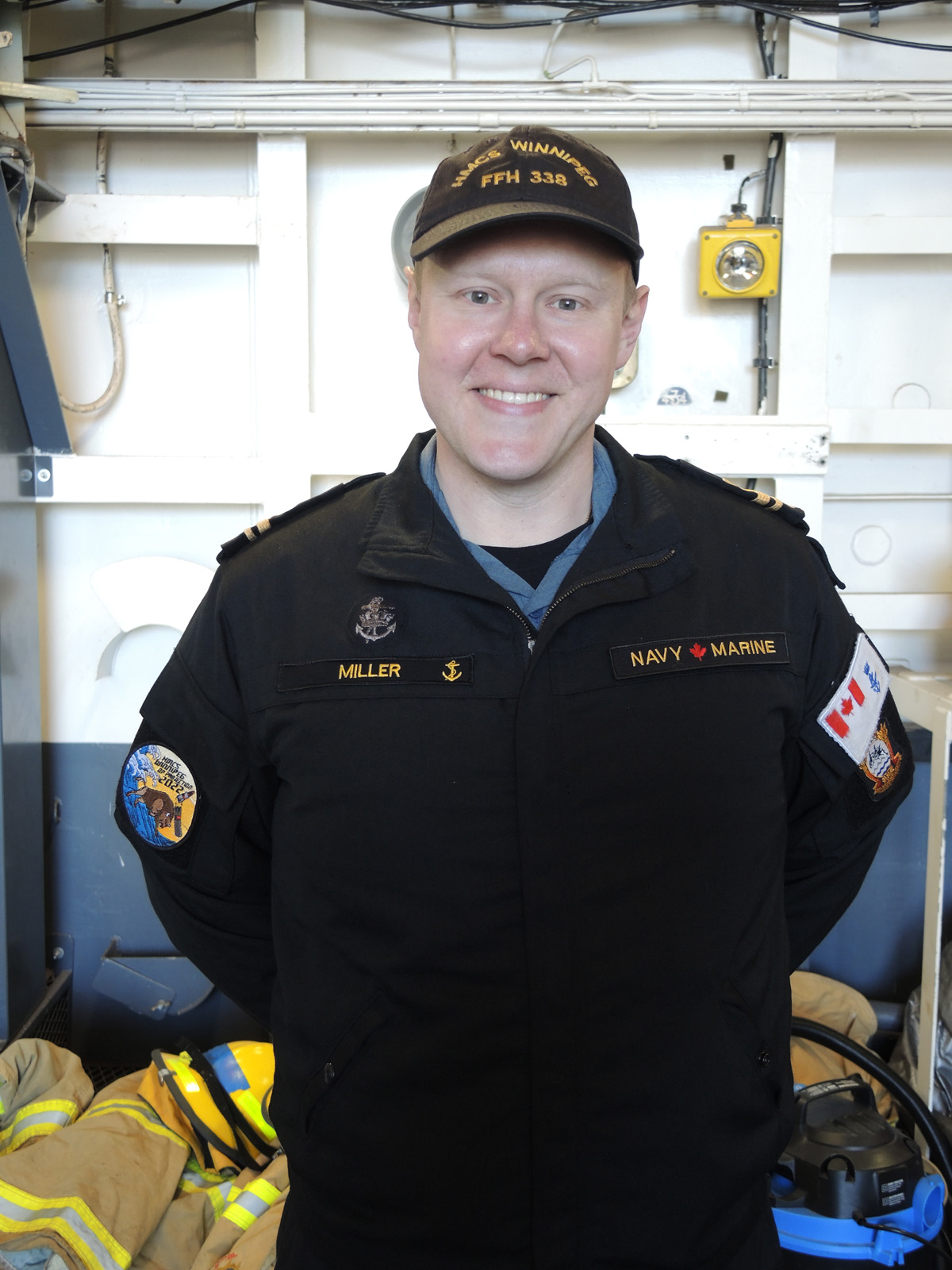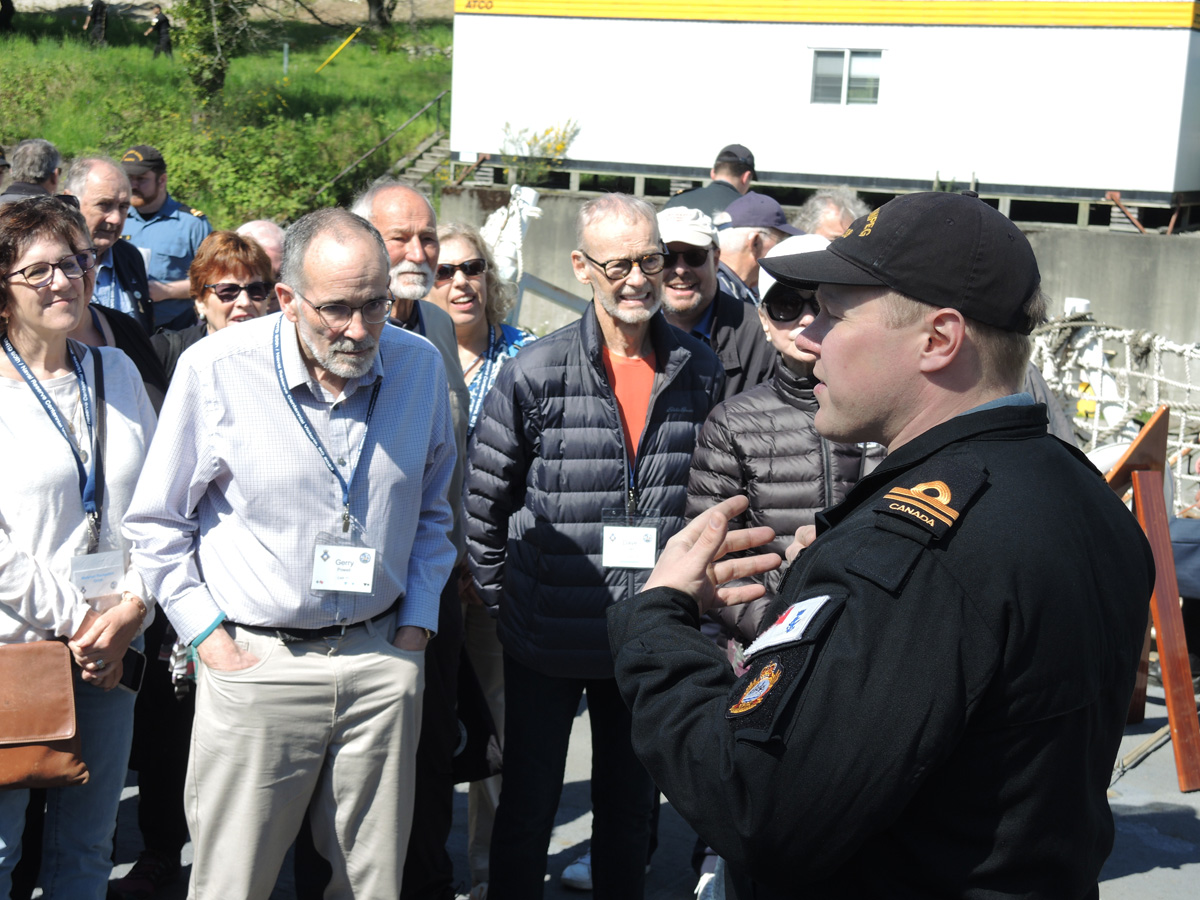5 QUESTIONS: HMCS Winnipeg Bridge Watchkeeper
By Lookout Production on Jun 24, 2023 with Comments 0
Peter Mallett
Staff Writer
Sub-Lieutenant (SLt) Benjamin Miller is a Naval Warfare Officer by trade and a Bridge Watchkeeper of the Royal Canadian Navy (RCN) frigate HMCS Winnipeg. The 36-year-old began his naval career in 2019 proceeding his seven years as a reservist with the Canadian Army. As an Officer of the Watch, SLt Miller is responsible for ensuring the ship’s movements and program is executed correctly and on time.
What are biggest responsibilities and challenges of a Bridge Watchkeeper?
Naval operations are complex, and the Officer of the Watch (OOW) sits at the center of that complexity. The OOW is critically involved in everything onboard, from driving the ship, launching the CH-148 Cyclone helicopter, putting a RHIB or one of the Zodiacs in the water to ‘streaming the tail’ of the ship’s Towed Array Sonar and acoustic countermeasure system or prepping for a weapons serial. We are uniquely positioned to make the ship’s program run smoothly or take it off the rails if our performance is not up to scratch. There is little margin of error, and the learning curve is quite steep.
What is one interesting thing about your job that few people realize?
How much basic math is involved. Often, the Officer of the Watch will be required to run a few sums or calculate vectors to determine the closest point of approach. The math itself is simple but grinding out the numbers under pressure with the bridge team watching over your shoulder can be uncomfortable.
What is the strangest or most remarkable thing you have seen aboard an RCN vessel?
As our ship crossed the equator on Aug. 29, 2022, I witnessed a centuries-old naval tradition called ‘Crossing the Line’. It came complete with costumes, speeches and props. It saw King Neptune (portrayed by MS Dubeau) come aboard and bargain with our captain to arrange passage into his domain. Split into tadpoles and shellbacks, our ship’s company formed up on the Foc’s’le to greet him. He held court on the quarterdeck the next morning, and his livery, herald and queen remain some of the strangest things I have seen.
How has technology changed your job in recent years in the RCN?
Navigating and piloting ships is one of the oldest skilled trades. Classically, a ship’s navigation was determined with a paper chart, sextant, compass and a reliable timepiece. While we still cover some of these basics in our training, the modern bridge includes chart-plotting software, radars across multiple bands and sophisticated communications equipment. Bridge Watchkeepers are therefore required to process a surplus of information and to act as technical troubleshooters in addition to other aspects of the job mentioned before.
What is the most interesting deployment you have ever done and why?
Winnipeg participated in RIMPAC 2022 last June and this was my first exposure to working with our allies, and the United States Navy in particular. The scope of the American sea power, the number and measure of their ships was eye-opening to me. I was also delighted to be in Pearl Harbor for the Fourth of July celebrations. American sailors, marines and their communities show an unrivalled level of pride and support for their navy, in my experience.
Filed Under: Featured
About the Author:







